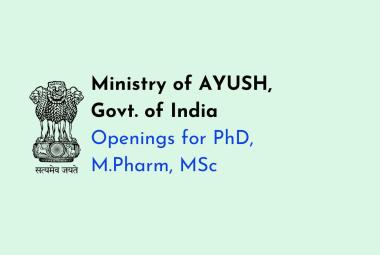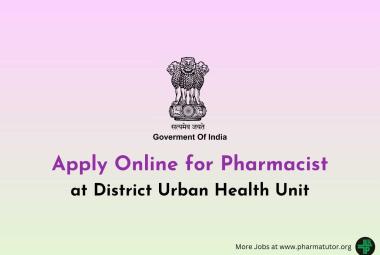




APR 2015 ARTICLE LIST >>
PharmaTutor (April- 2015)
Print-ISSN: 2394 - 6679
e-ISSN: 2347 - 7881
(Volume 3, Issue 4)
Received On: 05/01/2015; Accepted On: 15/02/2015; Published On: 01/04/2015
AUTHORS: Jadhav Santosh1*, Mali Audumbar1, Tamboli Ashpak2
1Department of Pharmaceutics, Sahyadri College of Pharmacy, Methwade,
Sangola, Solapur, Maharashtra, India.
2Department of Pharmaceutical chemistry, Sahyadri College of Pharmacy, Methwade,
Sangola, Solapur, Maharashtra, India.
*jadhavsan88@gmail.com
ABSTRACT
Since the current Ebola Virus Disease (also referred to as Ebola Haemorrhagic Fever) outbreak began in Guinea in December of 2013, the outbreak now involves trans-mission in Guinea, Liberia, Nigeria, and Sierra Leone. Ebola haemorrhagic fever (EHF) is a zoonosis affecting both human and non-human primates (NHP). Ebola virus (formerly officially designated Zaire Ebolavirus, or EBOV) was first seen infecting humans in African continent; especially Sudan, Democratic Republican of Congo, Zaire and nearby countries. Fruit bats of the Pteropodidae family are considered to be the natural host of the Ebola virus. The virus is transmitted to people from wild animals and spreads in the human population through human-to-human transmission. The World Health Organization (WHO) reports that this is the largest Ebola Virus Disease (EVD) outbreak ever recorded. EVD outbreaks have a case fatality rate ofup to 90%. The research is on-going on development of making vaccine to curb this virus yet licensed success or specific treatment is not achieved.
How to cite this article: S Jadhav, A Mali, A Tamboli; Resources, Guidance, Control and Prevention for Ebola Virus Disease- An Overview; PharmaTutor; 2015; 3(4); 12-20
[ABSTRACT WITH CITATION] [VIEW AS HTML]

REFERENCES:
1. WHO Statement on the Meeting of the International Health Regulations Emergency Committee Regarding the 2014 Ebola Outbreak in West Africa, August 8, 2014. Accessed on 8/12/14. Available www.who.int/mediacentre/news/statements/2014/ebola-20140808/en.
2. Feldmann et al. 2005; Groseth,Feldmann& Strong 2007; Towner et al. 2008.
3. Special Pathogens Branch CDC (2008). Known Cases and Outbreaks of Ebola Haemorrhagic Fever. Center for Disease Control and Prevention.
4. Waterman, Tara (1999). Ebola Cote D'Ivoire Outbreaks. Stanford University. http://virus.stanford.edu/filo/eboci.html. Retrieved 2009.
5. Francisco Blanco-Silva, Stephanie Gruver, Young-Ju Kim, Carol Rizkalla, The Epidemiology of Ebola Virus in Western Lowland Gorillas and the Human Population in the Congo, May 12, 2003.
6. Isaacson M, Sureau P, Courteille G, Pattyn S R, Clinical Aspects of Ebola Virus Disease at the Ngaliema Hospital, Kinshasa, Zaire, 1976. http://www.itg.be/ebola/ebola-12.htm.
7. google.co.in
8. cdc.gov/vhf/ebola/hcp.
9. Flemming A. Achilles heel of Ebola viral entry. Nat Rev Drug Discov, October 2011; 10 (10): 731.
10. Kuhn, Jens H, Becker, Stephan, Ebihara, Hideki. Proposal for a revised taxonomy of thefamily Filoviridae: Classification, names of taxa and viruses, and virus abbreviations. Archives of Virology, 2010; 155 (12): 2083–103
11. Carette JE, Raaben M, Wong AC. Ebola virus entry requires the cholesterol transporter Niemann-Pick C1. Nature, September 2011; 477 (7364): 340–3.
12. nairaland.com/1835035/prevention-ebola-virus. Accessed on August4, 2014.
13. Côté M, Misasi J, Ren T, Bruchez A. Small molecule inhibitors reveal Niemann-Pick C1 is essential for Ebola virus infection. Nature, September 2011; 477 (7364): 344–8. 22
14. who.int/csr/disease/ebola/en/
15. Bowen, ETW, Lloyd, G, Harris. Viral hemorrhagic fever in southern Sudan and northern Zaire. Preliminary studies on the etiological agent. Lancet, 1977; 309 (8011): 571–3.
16. Wamala JF, Lukwago L, Malimbo M. Ebola hemorrhagic fever associated with novel virus strain, Uganda, 2007-2008. Emerging Infect. Dis., 2010; 16 (7): 1087–92.
17. Feldmann, HK. Molecular biology and evolution of filoviruses. Archives of virology. Supplementum, 1993; 7: 81–100.
18. Taylor, D, Leach, R, Bruenn, J. Filoviruses are ancient and integrated into mammalian genomes. BMC Evolutionary Biology, 2010; 10: 193.
19. Miller EH, Obernosterer G. Ebola virus entry requires the host-programmed recognition of an intracellular receptor. EMBO Journal, March 2012; 31 (8): 1947–60.
20. Advisory Committee on Dangerous Pathogens. Management of Hazard Group 4 viral haemorrhagic fevers and similar human infectious diseases of high consequence [internet]. Department of Health; 2012 [cited 2014 Mar 31]. 99].
21. nih.gov/health/ebola.htm.
22. niaid.nih.gov/topics/ebolamarburg/research/Pages/default.aspx













